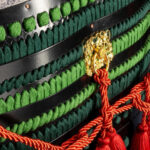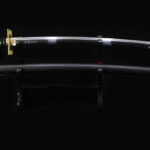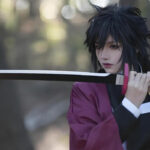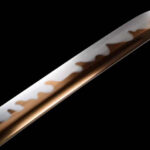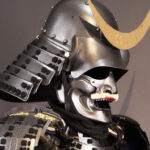Understanding the Differences Between Wakizashi and Tanto Swords
In the world of Japanese swords, two iconic blades—Wakizashi (脇差) and Tanto (短刀)—stand out for their distinct roles, design, and historical significance. This article explores the essential differences between these two traditional swords, helping enthusiasts and collectors gain a deeper understanding of their unique features and cultural importance.
What is a Wakizashi?
A Wakizashi is a medium-length Japanese sword, typically ranging from 30 to 60 centimeters (about 1 to 2 shaku) in blade length. Historically, the Wakizashi was worn alongside the Katana, forming a pair known as the “Daitō”, the symbol of a samurai. It was carried as a backup weapon, providing balance and versatility for combat in tight spaces, especially when a samurai lost their primary sword.
Key Features of Wakizashi:
Blade Length: The Wakizashi’s shorter length, compared to the Katana, makes it ideal for close combat and quick, agile movements. The balanced design of the Wakizashi also allows for effective one-handed or two-handed usage, which is especially useful in confined quarters.
Versatility: In addition to its combat capabilities, the Wakizashi is a practical tool used in daily life for various tasks such as cutting food, crafting, and even performing ceremonial functions.
Symbolic Significance: More than just a weapon, the Wakizashi symbolizes the honor and status of the samurai. It played an important role in seppuku (ritual suicide), where it was used by samurai to take their own lives honorably in times of disgrace. It is also worn during formal ceremonies as a sign of status.
Craftsmanship: The Wakizashi is hand-forged by skilled swordsmiths, and its elegant curve reflects the beauty and functionality of Japanese sword craftsmanship. This blade is not only a weapon but a masterpiece of artistry.
What is a Tanto?
The Tanto is a small Japanese dagger with a blade typically 15 to 30 centimeters long, designed for close combat and self-defense. Its compact size and lightweight design made it easy to carry and conceal, making it an essential weapon for both samurai and ninjas during the Warring States period.
Key Features of Tanto:
Blade Length: The Tanto’s short blade makes it an excellent weapon for quick strikes, particularly for stabbing rather than slashing. Its compact nature makes it easy to carry in a belt or hidden within clothing, allowing for discreet use in emergencies.
Design: The Tanto features a narrow, sharply pointed blade, typically single-edged, designed for swift, precise stabbing motions. Its functionality makes it ideal for close-quarters defense and surprise attacks, where rapid response is crucial.
Functionality: Primarily used as a self-defense weapon, the Tanto excels in quick stabs and stealthy attacks. It also has utility as a tool for various cutting tasks, adding to its practicality beyond combat.
Historical Significance: The Tanto holds a unique place in Japanese culture. While smaller than other traditional swords, its historical use in combat—especially for surprise strikes—helped elevate its importance among samurai, ninjas, and commoners.
Major Differences Between Wakizashi and Tanto
Although both the Wakizashi and Tanto are important pieces of Japanese sword history, they differ significantly in several aspects:
Blade Length:
The Wakizashi typically measures between 30 and 60 centimeters, making it suitable for close combat and versatile enough for a range of actions from slashing to cutting.
The Tanto, with its shorter length of 15 to 30 centimeters, is a compact blade ideal for stabbing and quick self-defense maneuvers in confined spaces.
Design and Use:
The Wakizashi has a broader, thicker blade designed for slashing, cutting, and close-quarters combat. It was worn alongside the Katana and symbolizes a samurai’s status, carrying cultural significance in rituals and everyday life.
In contrast, the Tanto is lightweight, with a narrow blade tailored for swift, precise stabs. Its compact size allows for concealability and makes it the weapon of choice for ninjas and those requiring a discreet blade.
Symbolism and Cultural Importance:
The Wakizashi holds deep cultural significance, often representing honor and identity for the samurai. It played an integral role in seppuku, a form of ritual suicide, and is still worn during formal occasions.
The Tanto, while significant in samurai culture, is primarily regarded as a practical tool for defense and emergency situations. Its symbolic role is less pronounced than the Wakizashi but remains important in the history of Japanese swordsmanship.
Functionality:
The Wakizashi is a versatile blade, used for both combat and practical purposes, such as cutting food or crafting. It is balanced and well-suited for combat scenarios when the Katana is not an option.
The Tanto, with its specialized design, excels in self-defense and close-quarters combat, making it an ideal tool for quick strikes and surprise attacks.
Hand-Forged Wakizashi Sword: A Masterpiece of Craftsmanship
If you are a collector or practitioner of martial arts, a hand-forged Wakizashi sword can be an essential addition to your collection. Crafted from Damascus folded steel, this sword combines traditional Japanese craftsmanship with modern durability, offering a stunning blade with intricate wave patterns that reflect the skill of the swordsmith. The full tang construction ensures both balance and strength, making it not only an object of beauty but also a reliable tool for training and display.
Perfect for those who appreciate the artistry of Japanese swords, the Damascus Wakizashi is a representation of both form and function, offering precision and versatility in both practice and aesthetic appreciation. Whether you are a collector or a martial artist, the Wakizashi stands as a symbol of the samurai spirit.
【shop now】
Hand Forged Japanese Wakizashi Sword Damascus Folded Steel Full Tang
Hand Forged Japanese Wakizashi Sword Damascus Folded Steel Full Tang
Conclusion
The Wakizashi and Tanto both have significant roles in Japanese sword culture, yet their differences in size, design, and purpose set them apart. The Wakizashi, with its larger size and symbolic value, complements the Katana as a secondary weapon for the samurai, while the Tanto serves as a practical tool for self-defense and close-quarters combat. Understanding these distinctions enriches the appreciation of these legendary swords and their enduring influence on Japanese culture.
Wakizashi:https://en.wikipedia.org/wiki/Wakizashi





